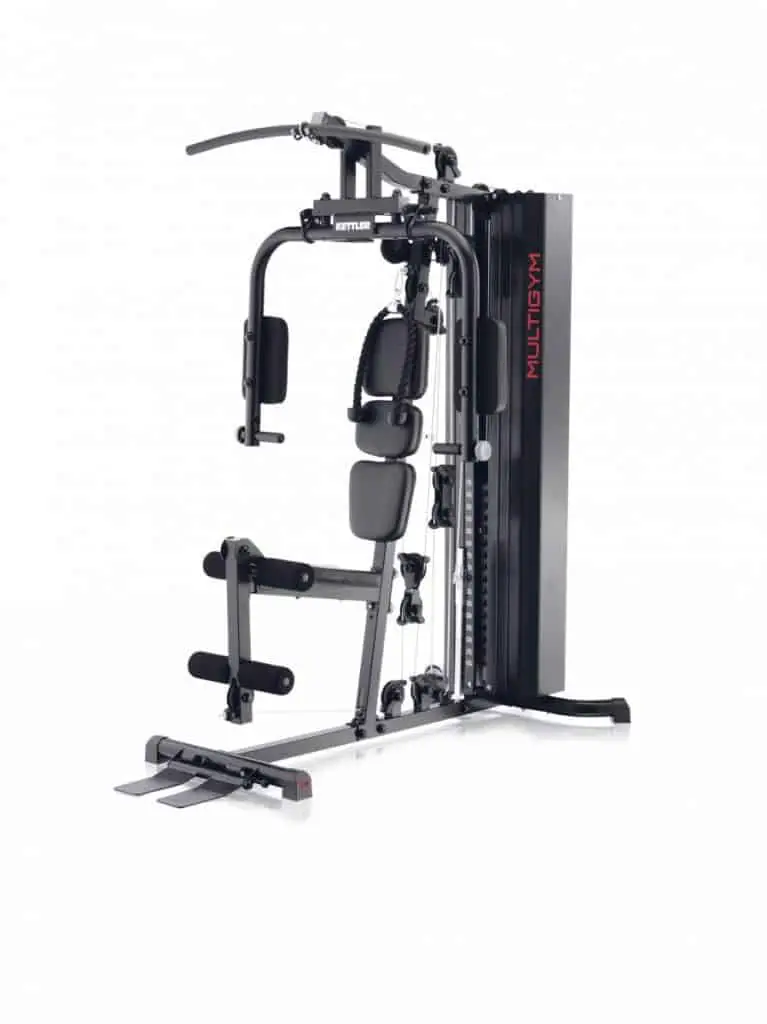Having some trouble choosing between a multi-gym and separate machines? You’re not alone. Here are the pros and cons of both so you can make the right decision.
Multi-station home gym versus separate machines: For most people, a multi-station home gym is a better solution than separate machines because they are cheaper and take up less space. All-in-one gyms provide enough resistance to build muscle and strength for beginners and intermediate lifters.
For a more in-depth explanation of why all-in-one home gyms are cheaper and a few more pros and cons, keep reading.
Check out my recommendations for multi-station home gyms by clicking here.
Contents
What is a multi-station home gym?
If you’ve ever been to a commercial gym, you probably know what gym machines look like. In a commercial gym, there are a lot of different machines that all do something different. They let you make different movements so they train different parts of your body.
A multi-station home gym is a bit different. This is a piece of equipment that tries to give you an all-in-one gym. They combine as many movements into a single piece of equipment as possible. These movements aren’t done at the same time but you can do them on the same machine. That means you sit on the same seat every time. While with separate machines, you have to change machines.
What’s the practical difference? Let’s get into it.
Multi-station home gym: Pros and cons
First, let’s take a look at multi-station gyms. What are the pros and cons of an all-in-one gym?
Pros
Cons
Want to train with free weights instead? Check out my eBook to build the best free weights home gym you can imagine.
Separate machines: Pros and Cons
You probably got the idea but let’s take a look at it from the other side. Here are the pros and cons of separate machines.
Pros
Cons
Which one is better?
So which one is better? It really depends on a few things;
Space
Most home gyms are not very big. Of course, you can always find exceptions and if you’re in the lucky position to have 1500 sq. ft. of free space, congratulations! However, most people don’t have that luxury. That means most people can’t fit all the machines necessary for a full-body workout in their home gym.
Check out my recommendations for multi-station home gyms by clicking here.
If that’s you, you’re better off getting a multi-gym than getting just half or a quarter of the machines you need.
With very limited space, free weights are a better option. Check out my eBook to find out exactly how to build a free weights home gym.
Budget
While multi-gyms are not cheap, they do a lot of things. They usually cost about the same as two average separate machines of similar quality. Of course, there is a big price range of both all-in-one gyms and separate machines.
Two machines aren’t going to provide you with a full workout. To get a full body workout you’ll need more than two different machines which means that in the end, a multi gym is cheaper.
Training Level
The more muscle you have, the more difficult it becomes to grow. Multi gyms are focused on beginner and intermediate lifters. That’s not to say you can’t build a great body with one because you can if used correctly. However, the resistance limitations mean that a multi-gym won’t be very effective for advanced lifters. But, for beginners, the resistance will be more than enough, and with proper programming, you can build a decent amount of muscle.
Most advanced lifters will use a combination of free weights and separate machines.
That brings us to the elephant in the room; free weights.
Free weights have a lot of benefits and are generally considered to be the most effective at building muscle and strength. However, for many people, they are intimidating. Free weights can also be unsafe for untrained people who don’t know how to use them.
Free weights and multi gyms are for different target audiences. So for beginners, the multi gym is a great solution.
If you want to learn more about what you need for a full-body workout with free weights, click here.
Final verdict
For most people that aren’t very well trained, and have limited space and money, a multi gym is a good solution. The only limitation is the maximum resistance that these machines can provide however, many exercisers will never run into those limitations.
But, if you want to get really big and strong, free weights + machines are the way to go.
Related questions
Can a multi-gym build muscle? Yes, if you’re a beginning or intermediate weightlifter, you can build a decent amount of muscle with an all-in-one gym. For advanced weightlifters, the resistance offered won’t be enough to grow muscle. If you’re not used to lifting weights, you’ll build a good amount of muscle with a multi gym provided you follow a good program.
Best Cable Machine Accessories
Make your cable trainer experience even better with these accessories.
- Attachments: No cable machine is complete with a good set of attachments. Click here to find the best set of attachments
- PlateMate: One or two platemates (Amazon link) can help you increase the weight more gradually on your weight stack. Just stick them onto your weight stack.
- Bench: A good adjustable weightlifting bench like the CAP Deluxe (Amazon) adds many exercise options to a cable machine like bench presses and shoulder presses.
Find the most complete functional trainer that includes most of these accessories by clicking here.



